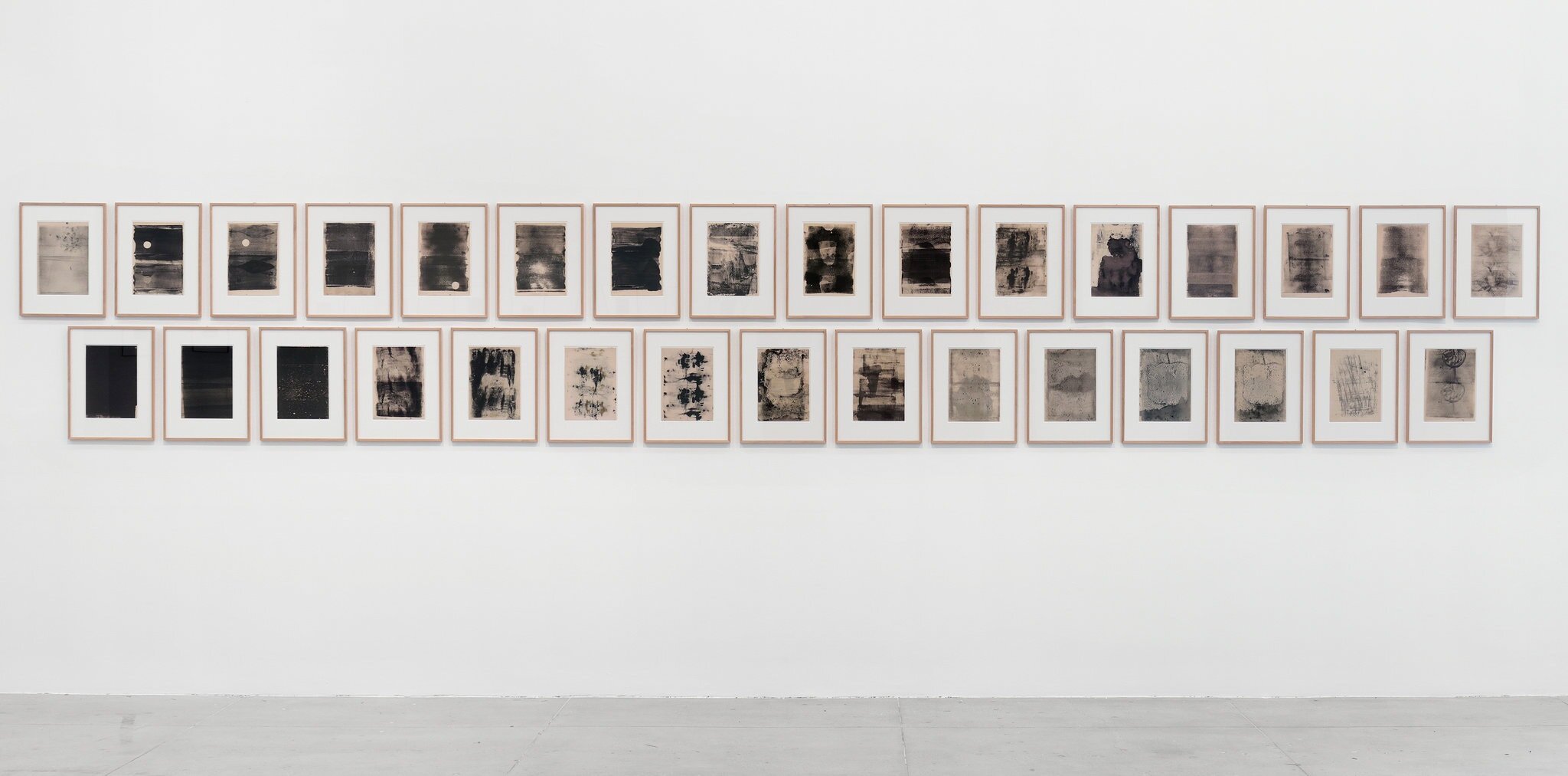The New York Times : Gerhard Richter show at Marian Goodman gallery part of New York Times Art Review
2 Art Gallery Shows to Explore From Home
Galleries and museums are getting creative about presenting work online during the coronavirus crisis. Here are two shows worth viewing virtually.
Installation view of Gerhard Richter’s “950-4 Abstract Painting” (2017), part of 22 new squeegeed abstractions at Marian Goodman.Credit...Gerhard Richter and Marian Goodman Gallery, New York; Cathy Carver
July 9, 2020
Gerhard Richter
Through July 24. Marian Goodman Gallery, 24 West 57th Street, Manhattan, and online at mariangoodman.com.
Some of New York’s now-shuttered museum exhibitions — the Museum of Modern Art’s precise Donald Judd retrospective, the Whitney Museum of American Art’s grand survey of Mexican painting — will go back on view later this summer, but one of the best will not re-emerge. “Gerhard Richter: Painting After All,” the final exhibition at the Met Breuer, took years to organize and yet closed after just nine days; since the Metropolitan Museum of Art is now turning over the Breuer building to the Frick Collection, the German artist’s terse photo paintings and doubt-wracked abstractions are being crated up and shipped home.
If, like almost everyone, you missed “Painting After All,” Mr. Richter’s longtime dealer, Marian Goodman, is offering a noble mulligan in the form of a large showcase of recent works, which can be viewed by appointment at her midtown gallery or in a robust digital presentation. I saw it in person, yet even online you can get a partial taste of 22 new squeegeed abstractions, and examine their coursing surfaces and staccato progressions via close-up video footage. Several small oils on wood from 2016, freer and gloopier than Mr. Richter’s earlier abstractions, employ a shocking fluorescent green that disrupts scraped runs of red, orange and black.
Installation view of Gerhard Richter’s “Elbe” (2012), a set of 31 digital fine art prints on paper.Credit...Gerhard Richter and Marian Goodman Gallery, New York; Cathy Carver
Also here are open, willfully spare drawings whose spindly lines and light impressions push his skepticism of abstraction to the breaking point, as well as photos of a forest overpainted with veils of dusky gray lacquer. (The dark forest, one of Mr. Richter’s prime metaphors for German history, here takes on a more literal, ecological overtone rare in his art.)
One eerie suite of 31 prints that appeared in “Painting After All” is also here at Goodman: the “Elbe” series, named after the river that flows through the artist’s birthplace of Dresden. In 1957, while studying printmaking there, Mr. Richter applied an ink roller directly to paper to produce cloudy, melancholy monotypes, wholly unlike the Socialist Realist imagery expected of an East German artist. He defected to West Germany in 1961 and retrieved the experimental prints only after the fall of the Berlin Wall. While he has disclaimed almost all the art he made in the East, he chose to salvage these early, formless slicks and sludges, reprinting them in 2012 as a suite of inkjet prints. They are the muffled starting pistol of an oeuvre where the figurative and the abstract always haunt each other, and where meaninglessness speaks volumes. JASON FARAGO
Published here.


